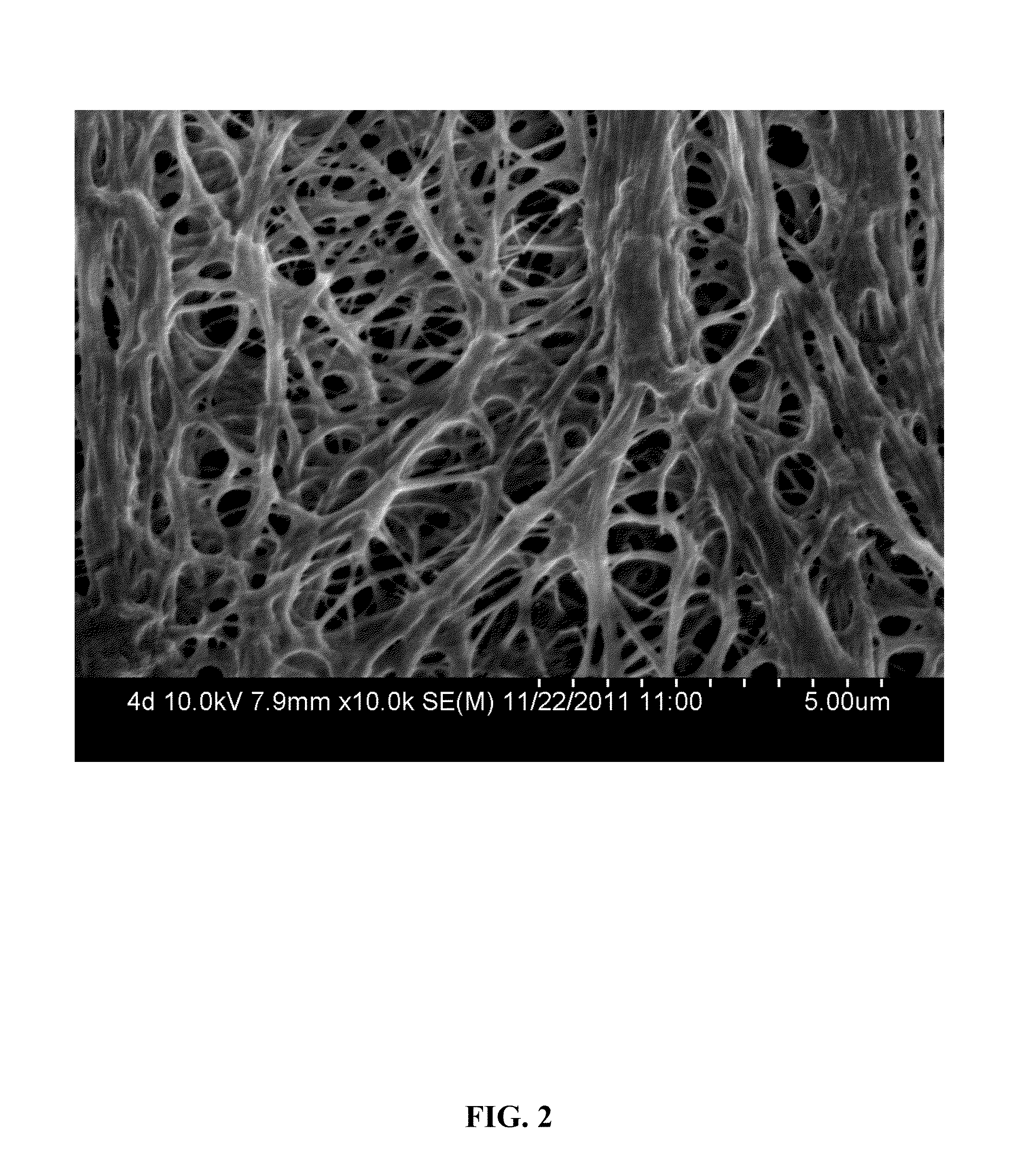Microporous membrane of polyethylene-based composite material and preparation method thereof
a polyethylene-based composite material and microporous membrane technology, applied in the direction of membranes, cell components, cell component details, etc., can solve the problems of poor thermal bonding ability, high internal resistance of batteries, and inacceptable, and achieve the effect of promoting the uniformity and cycle life of batteries
- Summary
- Abstract
- Description
- Claims
- Application Information
AI Technical Summary
Benefits of technology
Problems solved by technology
Method used
Image
Examples
example 1
[0045]Formulas of the microporous membrane of a polyethylene-based composite material
[0046]20 parts by weight of ultrahigh molecular weight polyethylene (UHMWPE) having a weight average molecular weight of 1,500,000; 4 parts by weight of polyisobutylene (PIB) having a weight average molecular weight of 120,000 and Brookfield dynamic viscosity of 150 Pa·S at 100° C.; 80 parts by weight of dioctyl sebacate; and 0.5 part by weight of the antioxidant 1010.
Method for Preparation of the Microporous Membrane
[0047]1) Compounding and piece casting: 4 parts by weight of polyisobutylene (PIB) and 20 parts by weight of dioctyl sebacate were kneaded at 120° C. by a kneading machine for 2 hr to yield a hot melt adhesive A. 20 parts by weight of ultrahigh molecular weight polyethylene and 60 parts by weight of dioctyl sebacate were swelled and mixed at 105° C. in a vacuum stirring tank for 12 hr to yield a slurry B. The hot melt adhesive A and the slurry B were dispersed at 105° C. in the vacuum s...
PUM
| Property | Measurement | Unit |
|---|---|---|
| flash point | aaaaa | aaaaa |
| peel strength | aaaaa | aaaaa |
| pressure | aaaaa | aaaaa |
Abstract
Description
Claims
Application Information
 Login to View More
Login to View More - R&D
- Intellectual Property
- Life Sciences
- Materials
- Tech Scout
- Unparalleled Data Quality
- Higher Quality Content
- 60% Fewer Hallucinations
Browse by: Latest US Patents, China's latest patents, Technical Efficacy Thesaurus, Application Domain, Technology Topic, Popular Technical Reports.
© 2025 PatSnap. All rights reserved.Legal|Privacy policy|Modern Slavery Act Transparency Statement|Sitemap|About US| Contact US: help@patsnap.com


